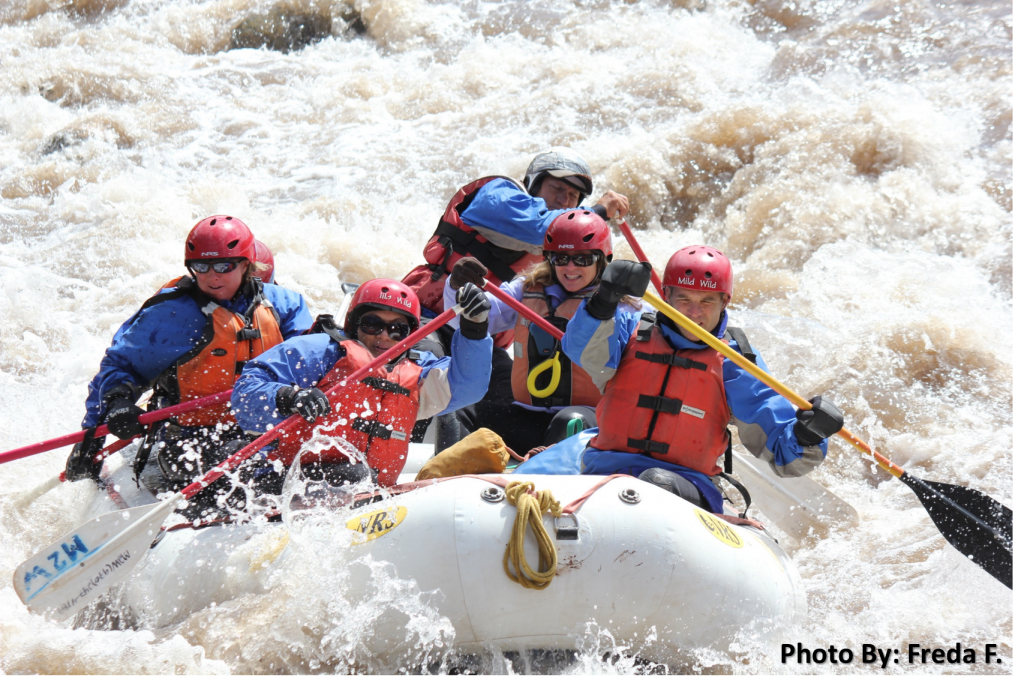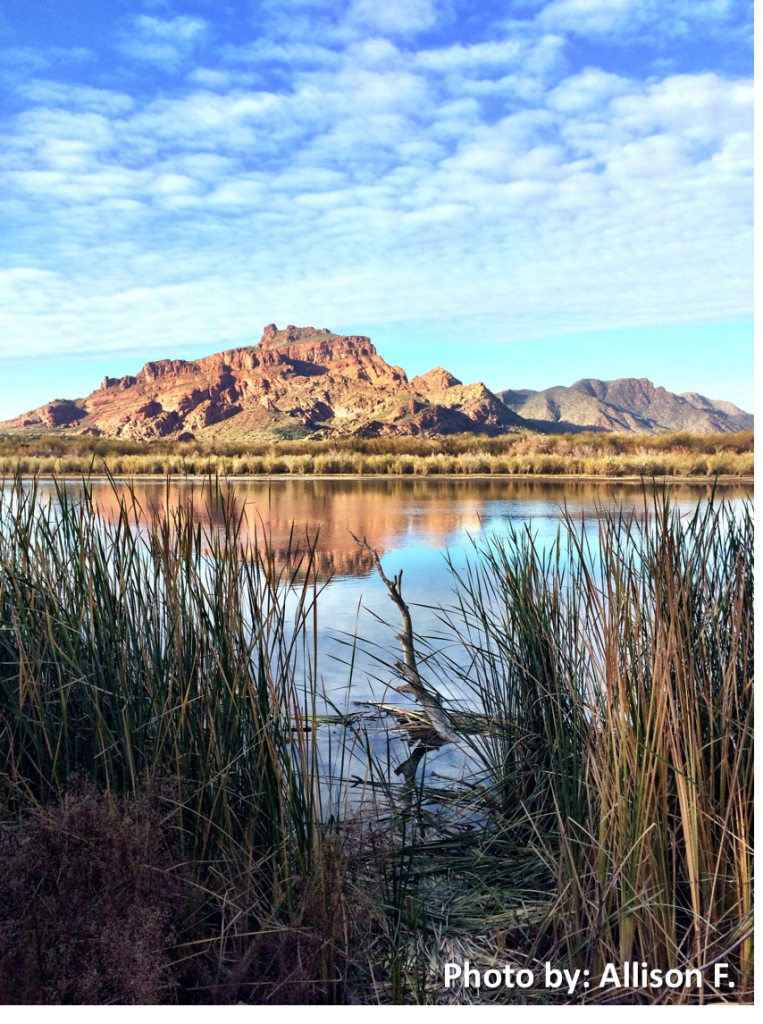The Salt River originates from the confluence of two tributaries (White and Black Rivers) in part of what is known as Arizona’s high country. The river flows about 100 miles through the middle of the state from east to west. The tributaries are created by a network of smaller headwater springs that are fed by snowmelt and flow through remote rugged canyons, into the river and further downstream. Lower portions of the river open up into the low desert and collect runoff from rain. The entire watershed supports diverse wildlife as the river flows through dramatically different geographical environments. Several dams constructed along the river create a series of important reservoirs (e.g. Lake Roosevelt and Saguaro Lake) managed by the Salt River Project and are critical in fueling the agricultural, industrial, and municipal growth of Phoenix and surrounding cities.
Allison F. shared this photo of the beautiful Salt River.
Many outdoor recreational opportunities exist and allow one to experience the river. Adrenaline seekers with a special permit can trek to the upper portions that offer whitewater rafting expeditions through the remote Salt River Canyon Wilderness. Those looking to spend a relaxing time tubing through the lower portions at slower speeds can book a ride with local tubing outfitters to enjoy floating past the symbolic Saguaro. However, trips anywhere on the river normally depend on weather conditions or the amount of precipitation received in a given year.

As the river continues to flow into central Arizona, the Granite Reef Diversion dam diverts water from the river into canals that travel through Metro Phoenix. This provides millions of people with water for irrigation and drinking water purposes. The river beyond this point becomes a dry river bed. However, there is a 5-mile stretch of the Salt River where urban runoff and groundwater is pumped from nearby wells to restore a portion of the river aboveground. This unique multi-collaborative project between the City of Phoenix and other partners is known as the Rio Salado Habitat Restoration Area, and is definitely worth a visit!
The photos featured are just a few of over 1,000 submittals for our Spring 2014 Celebrate AZ Water Photo Contest. Discover more water-worthy sites to visit across the state by checking out our Celebrate Arizona Water blogs.


